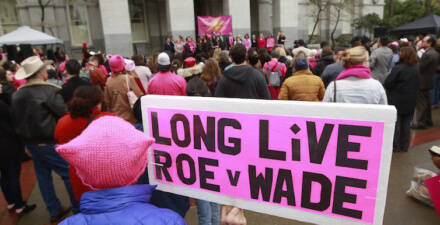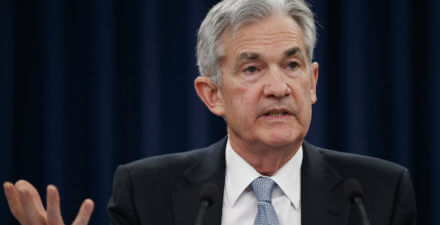Brad DeLong: Worthy reads on equitable growth, July 26–August 2, 2018
Worthy Reads from Equitable Growth:
- Anybody looking back at economic history cannot help but note that female physical autonomy and its absence have played an absolutely huge role. Kate Bahn and company are pulling together the evidence that this is not just history—that it still matters a lot in the United States today. Read Kate’s “Understanding the link between bodily autonomy and economic opportunity across the United States.”
- Seattle is pursuing (a version of) social democracy in one metropolitan area. In the 2010s, we learned from some of our laboratories of democracy (cough, Kansas and Wisconsin) what really not to do. Will Seattle provide a model for what we should do? Hilary Wething, a 2018 Equitable Growth grantee, will “utilize administrative data from Washington state to study the impact of Seattle’s paid sick time ordinance on earnings, hours, employment levels, and earnings volatility of workers covered by the new law” in her forthcoming research: “Seattle: Paid Sick Leave And Workers’ Earnings Dynamics.”
- In my opinion, Arindrajit Dube is one of the best economists around figuring out what we should control for and why in order to achieve real econometric identification. The contrasting pole is simply to throw in a bunch of controls until you have produced the numbers you want. In my view, we do not teach enough what should be controlled for and how, so people pick it up on the fly. Arindrajit has picked it up and is a master. Read Arindrajit Dube’s “Minimum wages and the distribution of family incomes in the United States,” in which he writes: “I find that a 10 percent increase in the minimum wage reduces poverty among the nonelderly population by 2.1 percent and 5.3 percent across the range of specifications in the long run.”
- Lyndon Johnson said: “You do not take a person who, for years, has been hobbled by chains and liberate him, bring him up to the starting line of a race and then say, ‘You are free to compete with all the others,’ and still justly believe that you have been completely fair. Thus it is not enough just to open the gates of opportunity. All our citizens must have the ability to walk through those gates. … Equal opportunity is essential, but not enough.” One of our problems in the United States today, however, is that that does not seem to be working for even those African Americans who can and do walk through all of our society’s formal and status gates to opportunity. Read “A College Degree and Marriage Fail to Yield Significant Wealth Gains for Black Women,” by Khaing Zaw, Jhumpa Bhattacharya, Anne Price, Darrick Hamilton, and William Darity, Jr., in which they write: “[In] the story of the American Dream … a college education is viewed as a key driver of upward mobility and the primary vehicle to eradicate racial differences.”
Worthy reads not from Equitable Growth
- Martin Wolf in “What really went wrong in the 2008 financial crisis?” reviews Adam Tooze’s book Crashed: How a Decade of Financial Crises Changed the World, in which Tooze writes: “There is a striking similarity between the questions we ask about 1914 and 2008.”
- A plea of despair for our politics and public sphere discourse from Duncan Black in “Nobody Who Works Full Time Should Live In Poverty.”
- Vijay Govindarajan, Shivaram Rajgopal, and Anup Srivastava note in “Why We Need to Update Financial Reporting for the Digital Era” that “The market caps of just four companies, Apple, Alphabet, Amazon, and Microsoft, now exceed $3 trillion.”
- Duncan Black comments in “Remember When Bill Clinton Ended Welfare As We Know It And Took That Off The Table Forever?” that “There’s barely anything resembling ‘welfare’ (aside from rich people welfare) but that doesn’t stop them: ‘(CNN) Republican Rep. Jason Lewis has repeatedly demeaned recipients of welfare and government assistance, calling them “parasites” and “scoundrels,” and said the black community had “traded one plantation for another.’ Conservative white people believe there’s a secret welfare system for black people. You cannot convince them otherwise, no matter what you do.”
- The view that all government should do in the economic realm is establish property rights and enforce contracts was never true. Smart governments always did much, much more. (Dumb governments did much, much more too.) Indeed, it is only with proper regulation that a market can fulfill its appropriate social role as a consumer surplus-generating mechanism. Read Diane Coyle in “Three Cheers for Regulation,” in which she writes: “One of the striking changes any rich-world traveler to low-income countries cannot fail to have missed during the past decade or so is the rapid spread of mobile phone use.”
- This is a brilliant 10-minute talk on economics as it really is—or should be—by Trevon Logan: “Ohio State University Masterminds,” in which he suggests, “Think of the first questions you ask someone when you meet them: ‘What do you do?’…”
- I badly need to find a usable mental model of how employer-side monopsony in labor markets interacts with downward nominal wage rigidity and search and involuntary unemployment. Analyzing just one of these market failures at a time is just not cutting it for me as I try to understand what is going on. Read Heidi Shierholz and Elise Gould, “Why is real wage growth anemic? It’s not because of a skills shortage,” in which they write: “Despite an unemployment rate at 4.1 percent or less since last October, wage growth has been anemic.”
- People should read a very nice article from the very sharp Justin Lenhart on one of the three things the Federal Reserve is missing right now. The first thing the Fed misses is that, at least as long as the current interest rate configuration holds, they need an inflation rate of 4 percent per year, not 2 percent per year, in order to have enough running room to fight the next recession. The second thing the Fed misses is that the slope of the Phillips Curve has changed, and so going for faster growth and higher employment right now is not risky but, rather, harvesting low-hanging fruit. The third thing the Fed misses is that a near-inverted yield curve is a danger sign—and yet the Fed is, as in 2006, finding reasons to pretend that “this time is different.” I confess that Fed thought—the governors, the bank presidents, and the staff—is quite opaque to me right now. I do not understand why they are making the analytical judgments that they are making. Justin Lahart makes the effort in “What the Fed Is Missing, Again,” in which he writes: “The Federal Reserve isn’t worried about the yield curve, and it has reason why. The problem: It is pretty much the same reason it wasn’t worried about the yield curve before the financial crisis.”
- I very much want everybody to notice that it has now been two-and-a-half years since Jared Bernstein wrote this, and there is still no sign that the economy has reached “full employment” or that the pace of wage and price growth is even beginning to spiral upwards. Thus the Federal Reserve continues to work with a model of the economy in which we should have very little confidence, if any. Read Jared Bernstein from back in 2016: “Important new findings on inflation and unemployment from the new ERP.”






